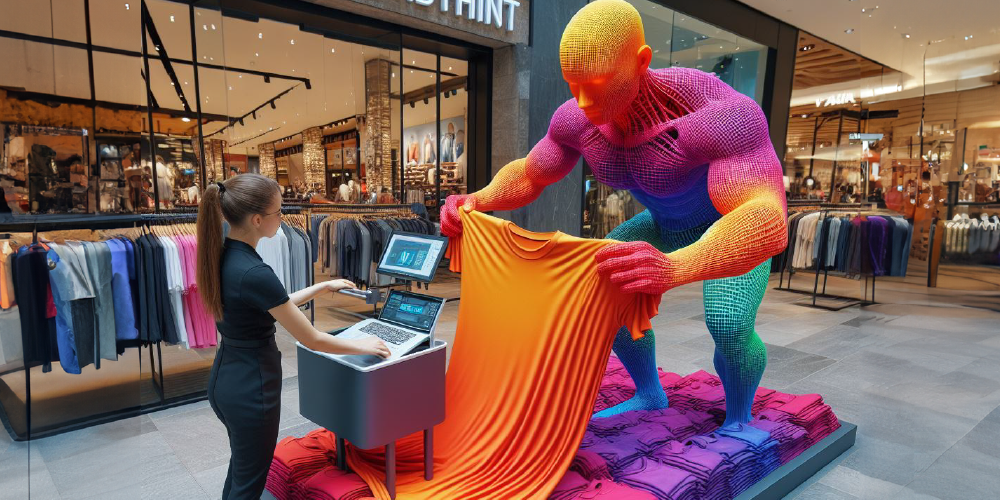Retail is a fast-growing, consumer-oriented space. The advent of smartphones and internet in this segment has led to diversification of retailer-customer interactions across multiple channels. Customers find product details online, go window shopping at physical stores, order online, return products at physical stores, raise queries and complaints on mobile devices, etc. It wouldn’t be wrong to say that technology has changed the meaning of shopping and all that it involves. In such a cutthroat competitive environment, retailers need to provide a seamless and unified experience across all channels. This is what the retail world calls Unified Omnichannel Commerce. This business model entails synergizing the various channels—mobile applications, websites, and physical stores—in a way that all of them share real-time data that can be accessed by retailers and consumers anywhere, anytime. While any trending business solution offers unending opportunities for staying ahead of the curve, there are challenges that tag along. And, Unified Omnichannel Commerce is not an exception to this.
CHALLENGES
- Lack of technology integration between physical stores & digital channels
While retailers have managed to step into the digital arena, their physical stores have somehow been left out as an independent and detached entity that functions on its own legacy system. This has led to a lack of integration among the different platforms. This leads to a paradoxical situation where the essence of integration that forms the crux of the unified omnichannel model becomes the most challenging aspect to overcome. The need of the hour is a middle-ware that brings together all the channels so that the brand can function as a single entity.
- Separate management of digital & physical spaces = broken journey for customers
This challenge stems from the disconnect between the physical store and digital channels right at the base. The ones involved in planning out and managing the digital space of a brand do not look into the physical-store operations. This can cause a critical wedge between the two sets of channels of retail, which could cause a choppy experience for customers when they wish to switch from one channel to another.
- Disparate catalog & digital content
Here is yet another fallout of a detachment between the physical store and digital platforms. Even as the digital space makes it easy and quick for customers to get information about their products of interest, the use of catalogs cannot be overridden. Physical stores even today present catalogs to the customers who walk in. An omnichannel commerce solution for this is digital content mirroring the product information from catalogs and vice versa. The same reasoning applies to ensuring uniformity in pricing and promotions. A failure in doing this can cause customers a hard time in making an informed decision, which could lead them to drop the brand altogether—a risk the retailer cannot afford.
- Different inventory across channels
It has become almost customary for consumers to do some research before they buy products. Even after that, the delivered products might not be satisfactory and customers will want to return them. They may have purchased the products online, but would like to return them at a physical store close to them. Thereafter, how the physical store should account for the returned product in their books becomes a problem: should the returned products now be considered as non-sold inventory and attract penalty or be resold later and counted among sales from the physical store in the future? Without an omnichannel commerce technology in place to ensure streamlining of inventory across channels, retailers will find it difficult to maintain their sanity in the face of this research-booking-returning rigmarole.
- Capturing customer data for better insights & customer engagement
Big data plays a vital role in the success of unified omnichannel commerce technology solutions. Brands keep a constant check on customer preferences, social media behavior, what they look for online, and such other crucial information that can help them plan their promotional strategies to increase sales. However, tracking and analyzing such data require efficient coordination between the various channels, which can be cumbersome when just starting off. Also, at least in the beginning, the task of collating data specific to each customer can seem like a humongous task that is next to impossible.
- Fulfillment capabilities
In order to meet the demand of consumers, retailers must have a fulfillment plan in place. Just having a stock of a product is not enough; retailers must identify the locations where these stocks need to be made available so that consumer demand can be met without any hassle. Here is where consumer data can be useful. Retailers would need to get information about how many people from specific locations prefer a particular product, where these products are commonly bought, are they booked online or purchased at physical stores, etc.
OPPORTUNITIES
- Better inventory management across channels
Omnichannel commerce solutions ensure retailers handle their inventory smartly. This involves understanding which the most preferred products are and finding out the volume of sales taking place online and off. A fulfillment plan can help in making available the right inventory at the right place at the right time. Efficient management of inventory reduces losses caused because of products going out of stock at most-visited stores and forced sales to get rid of excess inventory at locations that do not see demand for such products. On the flip side, retailers can plan lucrative promotional offers once they get a good idea of prospects for a particular across different locations. Such offers will also strengthen customer loyalty.
- Reduced barriers between different channels
When the physical store and digital platforms of a brand are synchronized for management, inventory, pricing, etc., customers will not face any discrepancies in information and issues with purchase, delivery, and returns on any channel. Unified omnichannel technologies thus brings down the barriers between the various channels of retail.
- Shared customer data for better in-store services
The omnichannel commerce strategy requires gathering and analysis of customer data across all platforms. This will improve the efficiency and capability of in-store associates to assist customers, in turn increasing the average order value from the customer.
- Increase in CLTV
A major plus of an omnichannel commerce platform is that the Customer Lifetime Value (CLTV) increases significantly. The value of a customer during the time he/she has spent buying a brand before switching to a competitor determines the CLTV. This value is calculated by taking into account the average order value, repeat sales, and retention time. More customer is engaged seamlessly by all channels and have seamless information, more the CLTV.
Unified omnichannel commerce is already a buzzword in the retail arena. Although not known among laymen, this mode of retail is growing on shoppers too. Clearly, omnichannel commerce is the next big thing that retailers across the board need to take note of and adapt to soon if they wish to stay ahead in the game.






